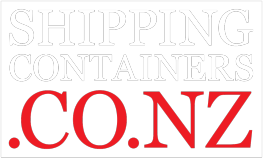Efficient standardized shipping is built on the premise that containers can be easily transported from ship to port to truck or train, and oversized or difficult goods are no exception. The shipping container industry was built on modernizing ideas, and it continues to innovate today. One of these innovations are the flat rack containers. Flat Rack containers are mainly used in oversized shipment and when odd-sized goods. They are containers that consist of a floor structure with a high loading capacity that comprises of a steel frame and a softwood floor and two end walls which are designed as either fixed or collapsible. Both end wall designs allow cargo securing means to be attached in addition to several flat racks which are stacked each on top of the other.
The flat racks used are of 20ft & 40ft length. On the side rails, the floor and the corner posts, several rash rings are installed for securing the cargo. These lashing rings take loads depending on the size of the flat rack used. They take loads of up to 2000 kg and 4000 kg for 20ft and 40ft flat racks respectively.
Depending on their types, some 20ft containers have forklift pockets while the 40ft containers have gooseneck tunnels at each end. They can also sometimes be equipped with lashing winches with two metric ton lashing belts. Flat Racks may also be provided for the transport of certain cargos. Flat rack containers can still be stacked as well. Whilst flat racks don’t have fixed side walls and no load-carrying structures, they still have the standardized weight bearing corner fittings both the top and bottom of the container so that they can still be safely stacked.
Flat fixed end containers
These provide additional load security for items with long lengths such as pipes. Flat rack fixed end containers are high loading capacity container having a floor and two fixed end walls, but has no side walls. They are used for oversized wide loads. The end walls allow cargo to be secured and for the flat racks to be stacked on top of each other easily and securely.
Flat collapsible end containers
These are designed to perform the same tasks as the flat fixed end containers only that their ends can be collapsed to allow easy staking for transport of multiple empty units. The collapsible end walls are also to make it ideal for storage and backhaul. Doing so helps cut down transport costs. Flush folding flat is also a configuration of flat rack containers. They are useful for shipping over length cargo and have the added bonus of saving space because they can be stacked into a small space with the end walls collapsed if they are being stored or repositioned. These types incorporate the advantages of both flat fixed end and flat collapsible containers. In this, the end walls collapse into the frame allowing the loading of machinery and other bulk materials directly over the collapsed ends. Made up entirely of a floor structure that can withstand a high loading capacity which enables heavy weight to be stacked in a small area. They make oversees shipping easy by providing a suitable solution for goods that are restrict loading from the top or from the sides of the container. They are widely used in the transport of large goods. Mainly, machinery and pipes are difficult when it comes to overseas transportation. During loading of such goods into a container can cause accidents not to mention cause serious damage to the goods themselves.
Flat rack containers do not have a top or sides thus making loading of such materials easy and more so reducing the chances of the goods causing accidents to the loading crew. These types of containers provide many benefits in the shipping of heavy goods that are mainly shaped lengthwise.
Flat rack containers are manufactured from steel thus keeping shipping easy and most importantly highly protected for shipping. Steel has a high intrinsic strength which is required in the transportation of heavy loads
They have an advantage in that other containers are only suitable for shipments that weigh significantly less than 40,000 kg (88,200 lbs.).
Like many other container types, Flat rack containers can be tracked which allow the owner to get the current position of the container on the world map and determine the port and the congestion.
Flat rack containers have a maximum gross weight of about 52,500 kegs (115,740 lbs.) and a tear weight of 5,100 kegs 911,240 lbs.). Their payload weight is of about 47,400 Kgs. 960,000 lbs.) and a concentrated weight load weight of 216,000 Kgs. (476,200 lbs.). This means they have a stacking test load per post of 97,200 Kgs. Their racking test weight and maximum allowable weight (lashing bars weight) is 15,240 Kgs. (33,600 lbs.) and 5,000 Kgs. (11,030 lbs.) respectively.
Containers are certified differently depending on their date of manufacture. These types of shipping container are probably the one container that isn’t regularly used for storage. However, they have been used in other innovative and useful ways as well.
For instance, flat rack containers are often used as an alternative when constructing a bridge on properties and farms, thanks to their heavy loading rates. This is useful if you need a temporary bridge over a dip or waterway, and don’t want to incur the cost of building a permanent bridge.
The flat rack is simply delivered to the site and manoeuvred into position by crane. And it’s just as easily taken away again when it is no longer required. When shipping cargo overseas, it is of great importance to choose the correct container for your goods Flat rack containers are widely used all over the world for shipping inconvenient and lengthy loads. They have greatly minimized cargo related accidents thus preventing cargo damage and loss of life.

